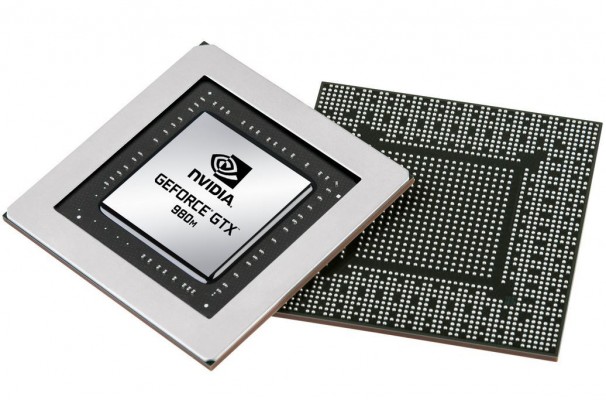Nvidia Maxwell GPU Benchmarked: A Laptop Gaming Leap
With the new GeForce GTX 980M and 970M graphics cards, Nvidia is determined to bring desktop-quality gaming to your notebook. Available on select laptops from the likes of ASUS and MSI, the Maxwell-based 980M and 970M offer up to double the performance of Nvidia's previous GPU generation while refining software features such as BatteryBoost and introducing such new ones as Super Dynamic Resolution.
Read on to get test results of a new ASUS G751JY-DH71 notebook with Nvidia's new GPU inside, as well as the full scoop on all of the new features.
Benchmark Results
Our test rig was the new ASUS G751JY-DH71. This $2,499 notebook has an Intel Core i7-4710HQ processor, Nvidia GeForce GTX 980M graphics with 4GB GDDR5 VRAM, a 1TB (7,200-rpm) hard drive and 256GB SSD, and 24GB of DDR3 RAM.
To see how well Nvidia’s new GeForce GTX 980M GPU performs, we pitted it against the following notebooks:
- $2,680 ASUS G750JZ-XS72 (2.4-GHz Intel Core i7-4700HQ, Nvidia GeForce GTX 880M GPU with 4GB VRAM, dual 256GB SSDs, 32GB RAM)
- $2,325 Maingear Pulse 17 (2.4-GHz Intel Core i7-4700HQ, Nvidia GeForce GTX 870M GPU with 2GB VRAM, dual 128GB SSDs, 16GB RAM)
- $3,398 Alienware 17 (2.9-GHz Intel Core i7-4910MQ, Nvidia GeForce GTX 880M with 8GB VRAM, 256GB SSD, 16GB RAM)
MORE: Best Gaming Laptops 2014
3DMark Ice Storm Unlimited
To start off, we ran 3DMark Ice Storm Unlimited, a synthetic graphics test that uses a DirectX 11 engine limited to Direct3D feature level 9. In the Unlimited version, the test is rendered offscreen, so as better to make comparisons between GPUs.
On this test, the Maxwell GPU’s dominance is a bit inconclusive; while it beat the older ASUS and the Maingear by roughly 13,000 and 14,000 points, respectively, it fell to the Alienware by about 13,000 points.
Sign up to receive The Snapshot, a free special dispatch from Laptop Mag, in your inbox.
World of Warcraft
Its active members may be dropping like wild boars, but World of Warcraft still remains one of the most popular online games. For this test, we turned the effects to Ultra, and set the resolution to 1920 x 1080.
Here again the Maxwell GPU was good, but didn’t distinguish itself from Nvidia’s last-generation GPUs. Its average frame rate of 135 fps was on a par with the other two Nvidia GeForce 880M GPUs.
BioShock Infinite
On this more demanding game, we turned the effects to the High settings and set the screen resolution to 1080p before running the built-in benchmark.
Here, the Nvidia GeForce GTX 980M GPU started to show its mettle. Its score of 92 fps was nearly 30 fps higher than the older ASUS G750 (65 fps) and the Alienware 17 (63 fps).
Metro: Last Light
This game can be particularly taxing on notebook GPUs, and up until now, very few, if any, were able to notch even a playable 30 fps. That changes with Nvidia’s new GeForce 980M GPU.
With the settings maxed out and the resolution at 1080p, the ASUS G751JY was able to average 37 fps on the Metro: Last Light benchmarking utility. By comparison, the ASUS G750JZ could only hit 24 fps, and the Alienware 17 mustered just 20 fps.
Ultra-realistic Lighting with VXGI
Good lighting is usually one of the marks of a great-looking video game, and Nvidia's Voxel Global Illumination (VXGI) technology uses the new Maxwell chips to make light bounce around more realistically than ever. By utilizing a voxel grid and a specialized cone tracing technique, the 980M and 970M are able to better simulate the type of light reflection we see in the real world.
To illustrate VXGI's potential, Nvidia showed us an interactive 3D rendering of Buzz Aldrin's famed moon landing. The reflection of light cast onto Aldrin reacted realistically to changes in the landscape, such as the subtle dimming of the image when Neil Armstrong and his highly reflective spacesuit were taken out of play.
No 4K Monitor? No Problem
Even if you can't plunk down the premium for a 4K monitor, you'll still be able to enjoy higher-than-HD gaming with Nvidia's new Dynamic Super Resolution (DSR) technology. Using the power of the new Maxwell chips, Nvidia is able to render a game at a higher resolution than a player's monitor allows for, and then scale that image down for playback on said monitor.
This essentially means that you'll eventually be able to enjoy 4K-like visuals on your regular 1080p display. As with all of Nvidia's new GPU features, DSR can be easily toggled within the GeForce Experience app.
To further ensure maximum graphics quality, the GTX 980M supports Nvidia's new Multi-Frame anti-aliasing (MFAA), which is designed to help demanding games run smoother than they would with the more common multisample anti-aliasing (MSAA). MFAA uses advanced sampling techniques to produce an image that looks similar to 4xMSAA, but with a faster frame rate that has the power to better support 4K gaming.
A Better BatteryBoost
The BatteryBoost portion of Nvidia's GeForce Experience software is designed to help you game longer on a charge, and it's now even better with the arrival of 980M and 970M. You can now configure specific graphics settings for when your notebook is running on battery, ensuring that you make the most out of your juice when unplugged. If you're not sure how to save power, GeForce Experience can automatically recommend optimal on-battery settings.
We got to see the revamped BatteryBoost in action on an MSI GT72 , which was running a demanding Tomb Raider benchmark that panned around the game's rich vistas and Lara Croft's detailed character model. With BatteryBoost on, the GPU will still hustle during graphically-stressful parts of a game, but will automatically hold back when not too much energy is needed. The game looked just as vivid with BatteryBoost on as it did without, and the framerate was locked to a solid 30 frames per second.
MORE: Top 10 Laptops Now
Outlook
We have many more tests to run on the ASUS G751JY and its Nvidia GeForce 980M GPU to see how well it performs on other games, and to determine via the Laptop Battery Test just how efficient it is for mobile gamers. For now, though, it certainly looks like the new Nvidia GPU delivers significantly more performance when gaming -- especially on the most demanding titles
Stay tuned for our full review of the ASUS G751JY and additional results from Nvidia’s new GPU.


